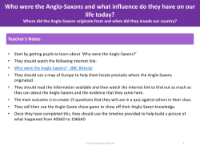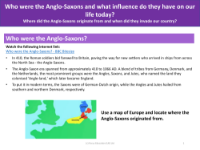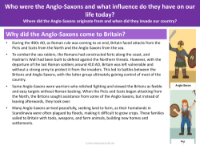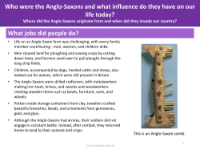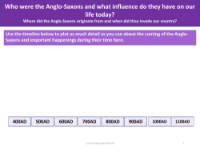Anglo-Saxons Men, Women and Children - Anglo-Saxons - Year 5
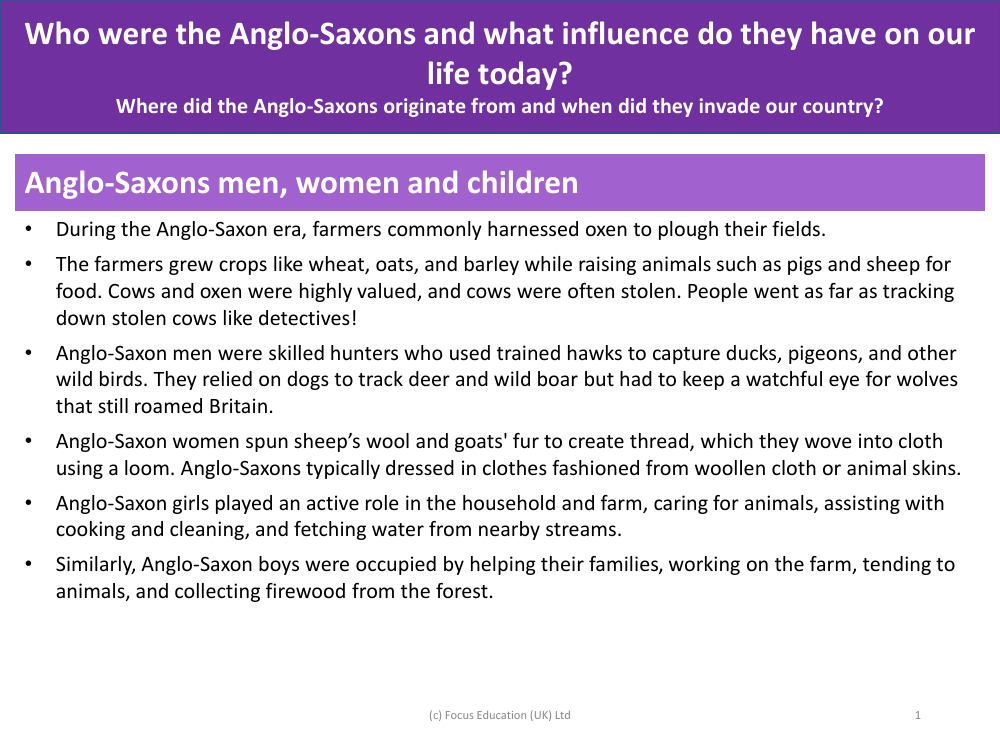
History Resource Description
The Anglo-Saxon era, a period that significantly shaped British history, was marked by a society where men, women, and children all played crucial roles in daily life. Farmers, predominantly using oxen, would plough their fields to cultivate essential crops such as wheat, oats, and barley, and they raised animals like pigs and sheep for sustenance. Cows and oxen held such value that they were often the targets of theft, leading to the need for individuals to track down these stolen animals with great determination. Hunting was a skillful pursuit for Anglo-Saxon men, who trained hawks for capturing birds and relied on dogs to help track larger game like deer and wild boar, all the while remaining vigilant against the threat of wolves that were present in Britain at the time.
Anglo-Saxon women contributed to the economy by spinning wool from sheep and fur from goats to create threads, which they then wove into cloth on looms. The clothing of the era was primarily made from these woollen fabrics or animal skins. Girls were integral to the running of the household and farm, engaging in a variety of tasks from animal care to cooking and cleaning, as well as fetching water from nearby streams. Boys, too, were actively involved in family life, assisting with farm work, caring for animals, and gathering firewood from the forest. These activities and roles defined the Anglo-Saxon way of life, leaving a lasting impact on the cultural and historical landscape of Britain.

